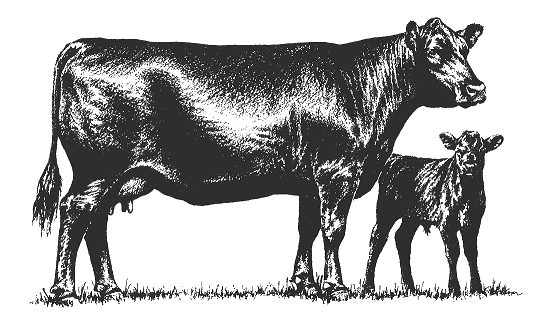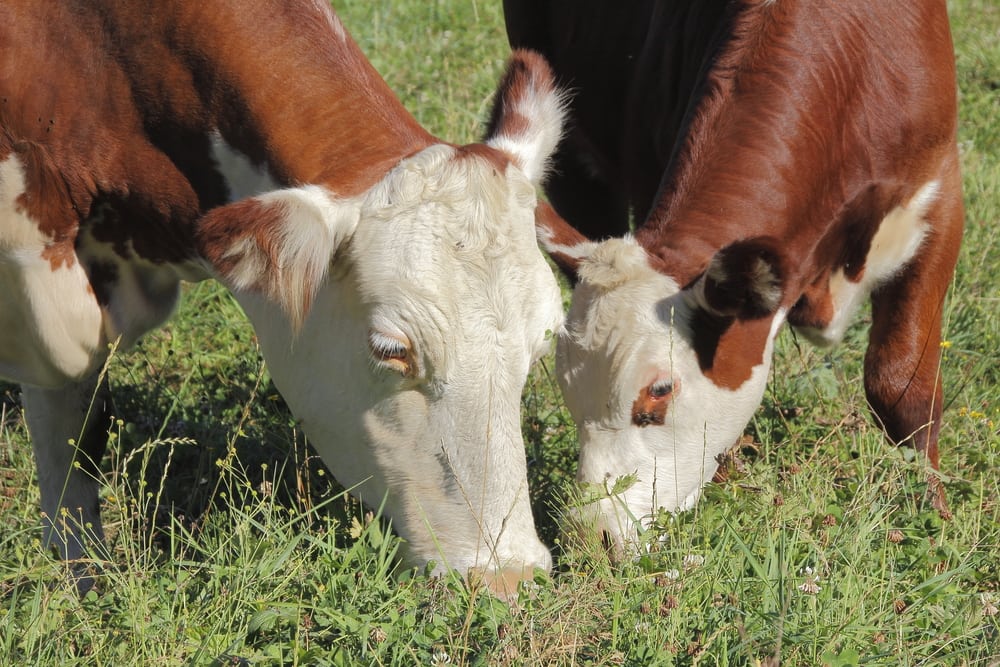Beef

Learn vital information about trichomoniasis, its effects on cow-calf operations, and ways to avoid it in a natural service herd.
Trichomoniasis is a bovine venereal disease that can cause substantial reproductive and economic loss in cow-calf operations that use natural service. The disease is caused by the protozoan Tritrichomonas foetus (T. foetus) and is commonly referred to as “Trich.” Bulls can become chronic, asymptomatic carriers of T. foetus because the organism can live in the microscopic folds of a bull’s penis and prepuce. Infections in cows, however, can result in early embryonic death, abortion, pyometra (pus-filled uterus detected at pregnancy examination), or infertility, influencing the reproductive performance and economic profitability of a cow-calf operation.
How Does Trichomoniasis Affect a Cattle Herd?
Some indications that your herd may be experiencing a problem with trichomoniasis:
- Repeated breeding that results in long, drawn-out breeding and calving seasons.
- A high percentage of open cows at pregnancy examination, or detection of a wide range of gestational ages. Most embryonic/fetal losses occur during the first trimester; late-term abortions are not common with trichomoniasis. Therefore, most reproductive losses are detected during pregnancy examination or the calving season.
- Pyometra(s) detected at pregnancy examination; this typically occurs in less than 5 percent of animals.
- Bulls show no clinical signs but can become chronic carriers.
- Cows and heifers will rarely show a very mild vaginal discharge, but this is usually never noticed. Therefore, like the bull, there are typically no initial clinical signs that a cow or heifer is infected with T. foetus.
- Cows and heifers can usually clear the infection in 2 to 6 months (sometimes longer), but usually not before sustaining some type of reproductive loss.
With so few noticeable clinical signs of trichomoniasis, it is important to view a herd’s overall reproductive performance to look for any indication of a problem. Trichomoniasis should be suspected, along with many other culprits, anytime herd reproductive performance declines in a natural service herd. In herds with new infections, the results can be devastating, with a long, drawn-out calving season and only a 50 to 70 percent calf crop. In herds where trichomoniasis has gone undetected for a long time, the results may be less dramatic because of temporary herd immunity. In such cases, the calf crop may only be reduced 5 to 10 percent; however, this loss is still enough to have a substantial economic impact.
Economic Impact
The economic impact of trichomoniasis is primarily due to three factors:
- Loss of calf crop due to early embryonic loss or abortion
- Loss of income due to lighter weaning weights resulting from delayed conception and late calving (since calves are born later in the season and then sold at lighter weights)
- Culling of open cows and infected bulls, and the costs associated with replacing valuable breeding stock
Risk Factors Associated With Trichomoniasis
Some factors that put a herd at risk for acquiring and maintaining trichomoniasis:
- Natural service
- Using leased or borrowed bulls, or introducing any “non-virgin” bulls into a herd without prior testing
- Large herd size (smaller herd size decreases exposure potential)
Transmission
 Tritrichomonas foetus is transmitted when an infected bull breeds a susceptible cow or heifer, or when a susceptible bull breeds an infected cow or heifer. Very rarely is T. foetus ever transmitted by contaminated semen or artificial insemination (AI) equipment, especially if semen is purchased from reputable AI studs and used with hygienic AI techniques. Reputable AI studs have strict biosecurity and quality control measures in place to ensure that their bull semen is not contaminated with T. foetus. So, AI using hygienic techniques with bull semen from a reputable source is an excellent way to prevent the introduction of T. foetus. However, AI may not be practical in larger herds.
Tritrichomonas foetus is transmitted when an infected bull breeds a susceptible cow or heifer, or when a susceptible bull breeds an infected cow or heifer. Very rarely is T. foetus ever transmitted by contaminated semen or artificial insemination (AI) equipment, especially if semen is purchased from reputable AI studs and used with hygienic AI techniques. Reputable AI studs have strict biosecurity and quality control measures in place to ensure that their bull semen is not contaminated with T. foetus. So, AI using hygienic techniques with bull semen from a reputable source is an excellent way to prevent the introduction of T. foetus. However, AI may not be practical in larger herds.
Treatment
Trichomoniasis is usually self-limiting in cows and heifers (they will usually clear the infection in 2 to 6 months), as opposed to bulls that typically become chronically infected. Unfortunately, one of the complicating factors associated with trichomoniasis is that there are currently no effective treatments with Food and Drug Administration approval. Therefore, infected bulls must be culled.
Prevention of Trichomoniasis
Some recommended practices to prevent the introduction of T. foetus into a cattle herd include:
- Utilize artificial insemination.
- Have your veterinarian test new non-virgin bulls at least once, along with a breeding soundness evaluation. This includes leased and borrowed bulls.
- Purchase replacement animals from reputable sources, and test appropriate animals prior to introducing them to the herd.
Talk to your regional Animal Science and Forages Extension agent and your veterinarian about trichomoniasis. If you suspect trichomoniasis in your herd, contact your veterinarian for a thorough investigation.
 Soren P. Rodning, Extension Veterinarian, Professor, Animal Sciences, Auburn University
Soren P. Rodning, Extension Veterinarian, Professor, Animal Sciences, Auburn University
Revised January 2024, Bovine Trichomoniasis, ANR-1333

